
Roots
To journey into the historical presence of oiling in textured hair styling is to begin not with a trend or a product, but with a profound connection to ancestry, to the land, and to the living memory held within each strand. For those whose lineage winds through the vast continent of Africa and across the diaspora, hair has always been a canvas for identity, a language spoken in coils and crowns, a sacred marker. The very act of caring for this hair, particularly through the application of oils, forms a fundamental part of this inherited wisdom. It is a story whispered across generations, a practice steeped in reverence for the intrinsic nature of textured hair itself.
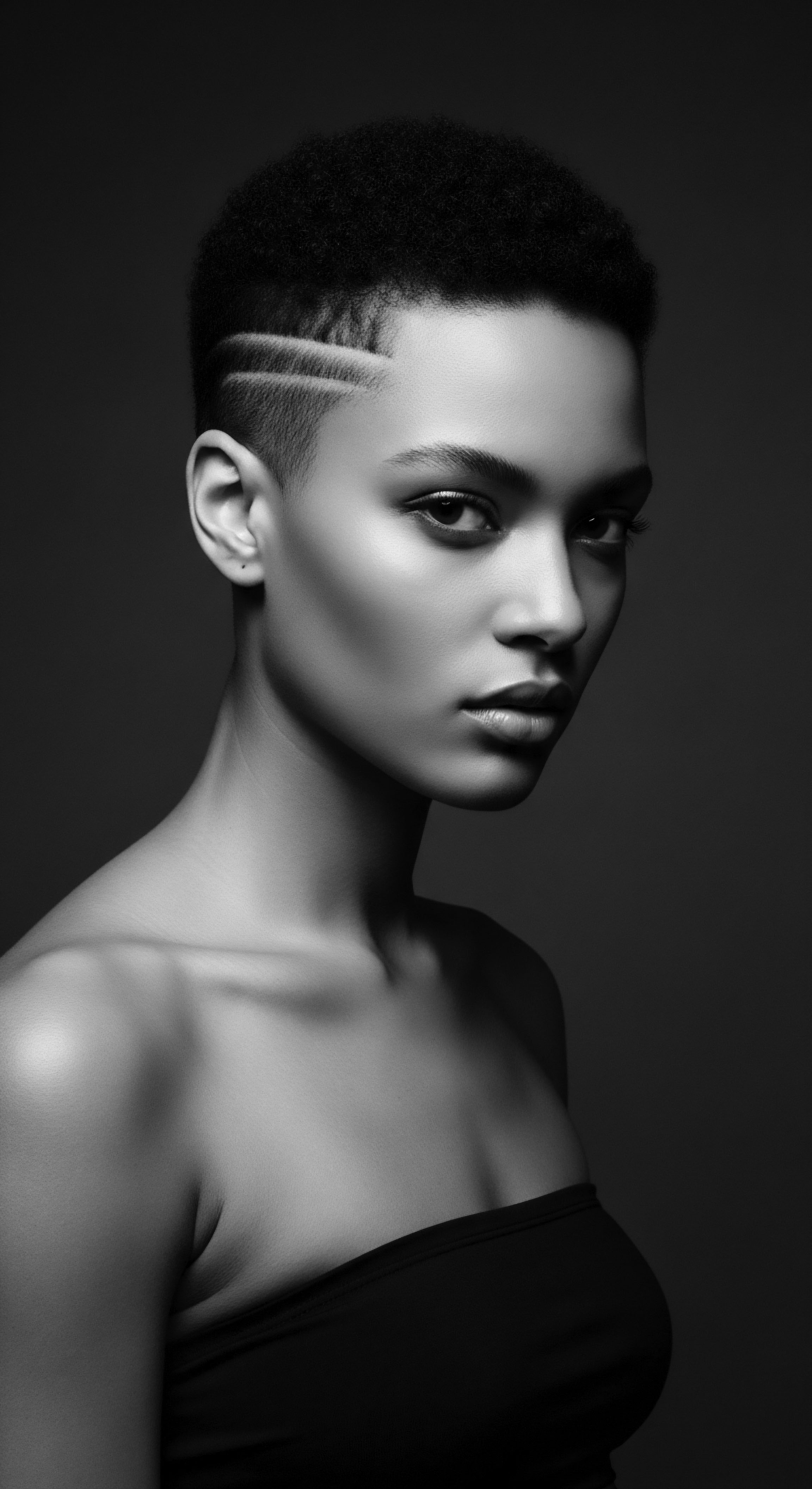
What Defines Textured Hair’s Structure?
The unique architecture of textured hair, from its tightest coils to its gentle waves, presents distinct needs, a truth understood by ancestral communities long before the advent of modern microscopy. Unlike straight hair, which tends to have a round or oval cross-section, coily and kinky strands often exhibit an elliptical or even flattened shape. This structural characteristic means that natural oils produced by the scalp struggle to travel the full length of the hair shaft, leaving the ends particularly prone to dryness.
Furthermore, the numerous bends and twists along a textured strand create points of vulnerability, where the cuticle, the hair’s protective outer layer, is lifted and exposed. This predisposes textured hair to moisture loss and breakage (Livara Natural Organics, 2024).
Ancestral caretakers, observing these inherent qualities, instinctively recognized the hair’s yearning for external lubrication and protection. They saw the hair’s need for a sealant, a balm to counteract the drying effects of sun, wind, and daily life. This acute observation formed the bedrock of oiling practices, a testament to empirical knowledge passed down through generations.
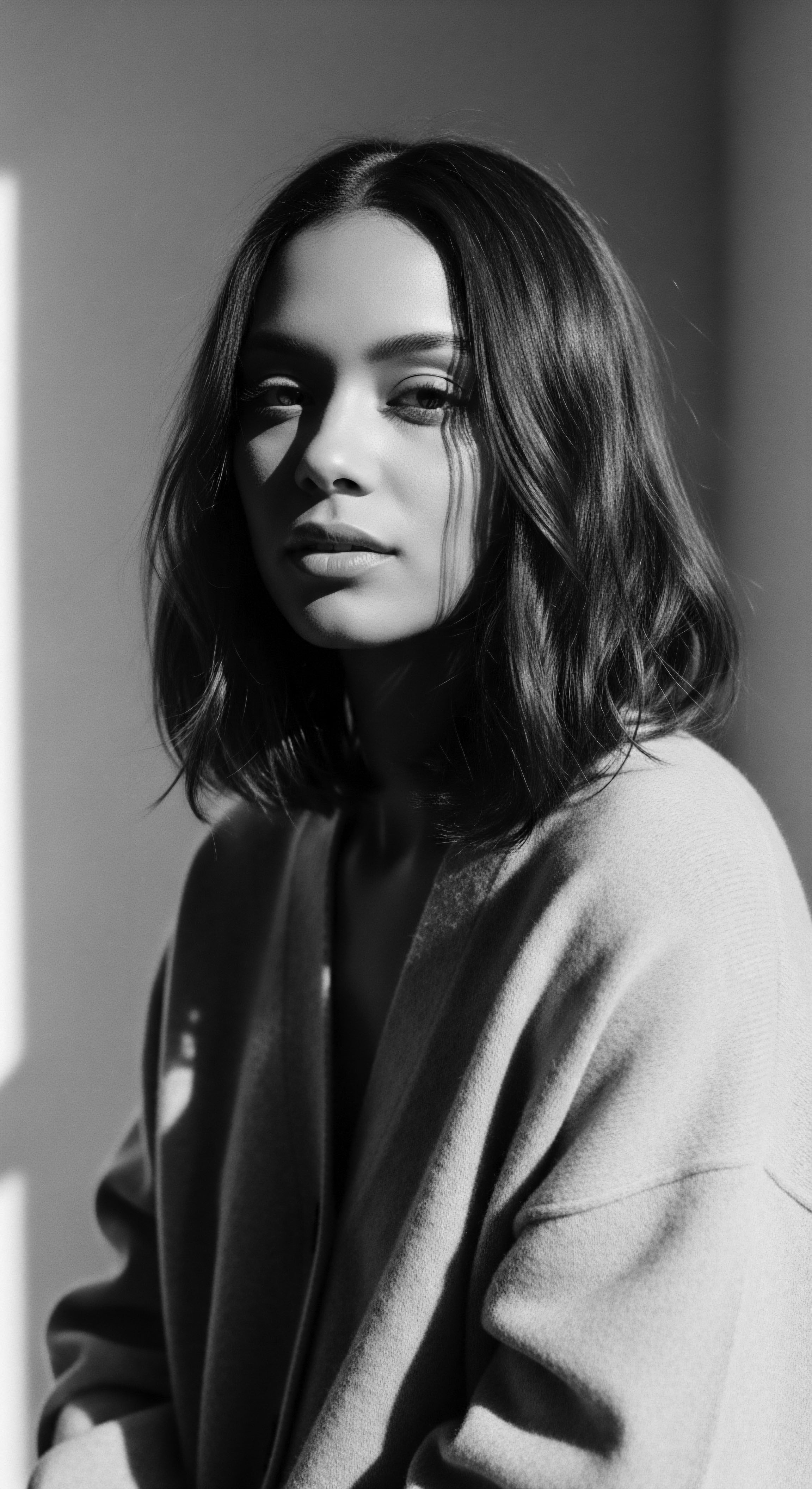
Ancestral Wisdom and the Hair’s Biology
Long before the scientific community validated the molecular benefits of specific lipids, diverse African communities, and those across the diaspora, utilized a range of natural oils and butters for scalp health and hair conditioning. This was not a random application but a deeply intuitive understanding of hair’s biological needs, often informed by the local botanical landscape. For instance, in West African traditions, women used shea butter, extracted from the nuts of the shea tree, to moisturize hair in hot, dry climates. This practice, dating back centuries, also found purpose in protective styling to maintain length and overall health (Cécred, 2025).
Similarly, palm oil, with a history spanning 5000 years in West Africa, held multifaceted uses, including topical application for skin and hair. The sustained practice of massaging these indigenous oils into the scalp and strands represents an ancestral science, a living archive of how human observation led to effective, nurturing care for unique hair types.
The historical presence of oiling in textured hair styling is a testament to ancestral understanding of hair’s biological needs, a knowledge passed down through generations.
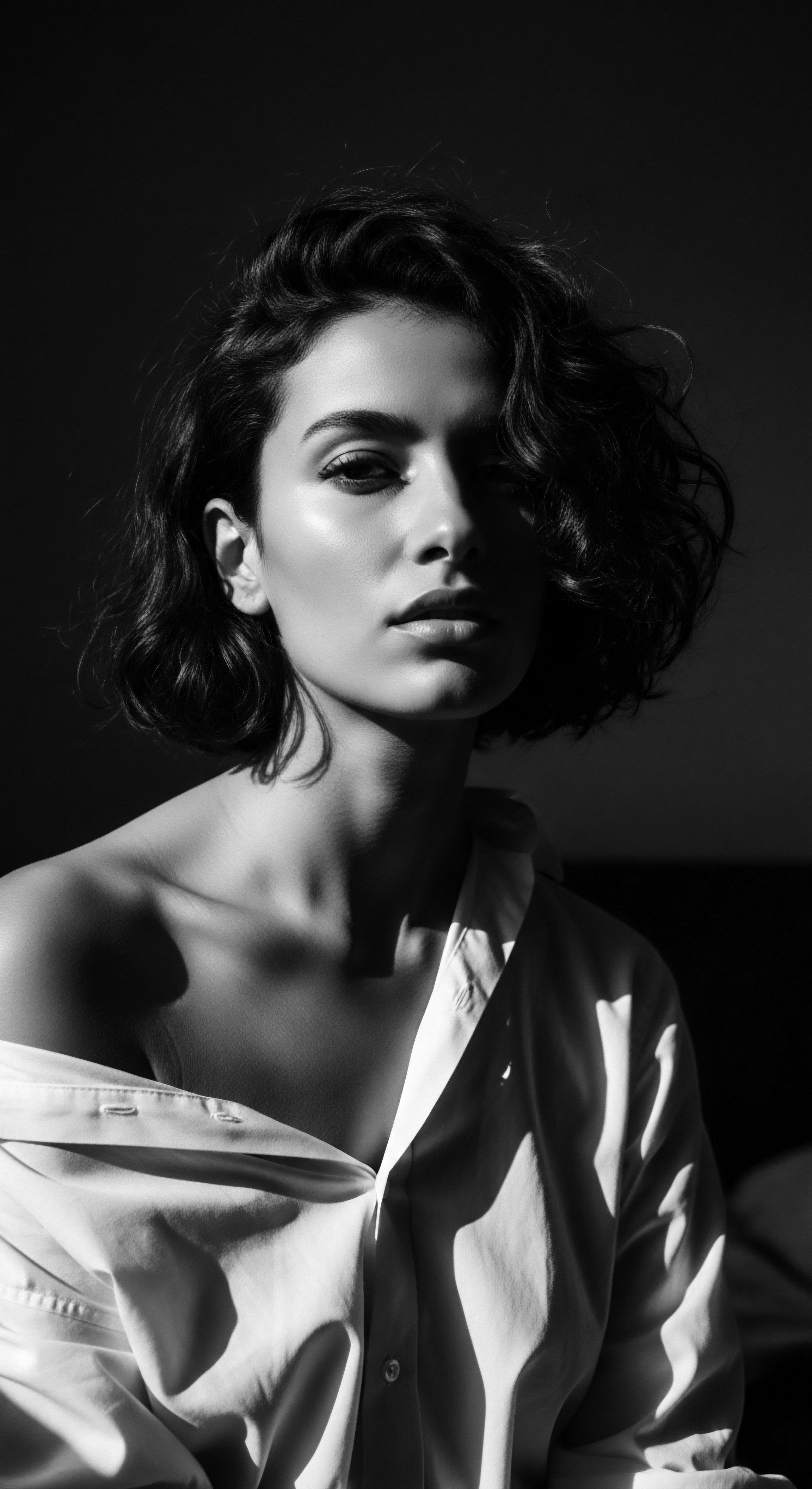
Early Terminology and Hair Types
The lexicon surrounding hair in ancestral communities was rich, often tying specific textures and their care to broader cultural and social meanings. While modern classification systems attempt to categorize textured hair numerically, traditional societies often described hair through its visual qualities and the practices associated with it. The very names given to hair types or specific styling methods often implied the foundational role of oils.
For example, the preparation of hair for intricate braiding, common in many African cultures, inherently involved softening and conditioning with various butters and oils, even if the ‘oiling’ itself was implicitly understood rather than explicitly named within the style’s title. This deep association speaks volumes about how oiling was not a separate step, but an inseparable element of hairstyling.

Environmental Influences on Hair Health and Oiling Practices
The environment played a crucial role in shaping ancestral hair care regimens. In arid regions, such as parts of West Africa, the need for moisture retention was paramount. Oils and butters served as a vital shield against the harsh sun and drying winds, preventing excessive water loss from the hair shaft. Conversely, in humid climates, certain oils helped manage swelling and frizz, maintaining the integrity of styles.
The availability of local botanicals directly influenced which oils became staples in particular regions.
- Shea Butter ❉ Dominant in the “Shea Belt” of West Africa, prized for its ability to protect skin and hair from sun, wind, and dust, and considered a sacred symbol of fertility and purity.
- Coconut Oil ❉ Widely used in tropical regions like the Caribbean, Southeast Asia, and parts of Africa, revered for its moisturizing, conditioning, and nourishing properties.
- Palm Oil ❉ Integral to West African traditions, used not only for cooking but also topically for its protective qualities and in beauty rituals.
- Castor Oil ❉ Known in ancient Egypt and also a staple in African and South Asian traditions, valued for strengthening hair and promoting growth.
This symbiosis between environment, indigenous flora, and hair care practices highlights the inherent wisdom of ancestral methods, demonstrating a holistic approach to well-being where hair care was intrinsically linked to survival and cultural expression. Archaeological evidence even points to the use of a stearic acid-rich material, possibly shea butter, in the hair of ancient Egyptian mummies dating back 2600-3500 years, confirming its long-standing role in hair preservation and styling (Obscure Histories, 2024).

Ritual
The application of oils to textured hair was never a mere technical step; it ascended to the realm of ritual, a ceremonial act steeped in cultural meaning and community connection. This ritual, often performed with intention and passed down through the generations, underscored the deep respect held for hair within Black and mixed-race communities. It speaks to a heritage where hair styling was an intimate engagement, a moment of care and cultural continuity.
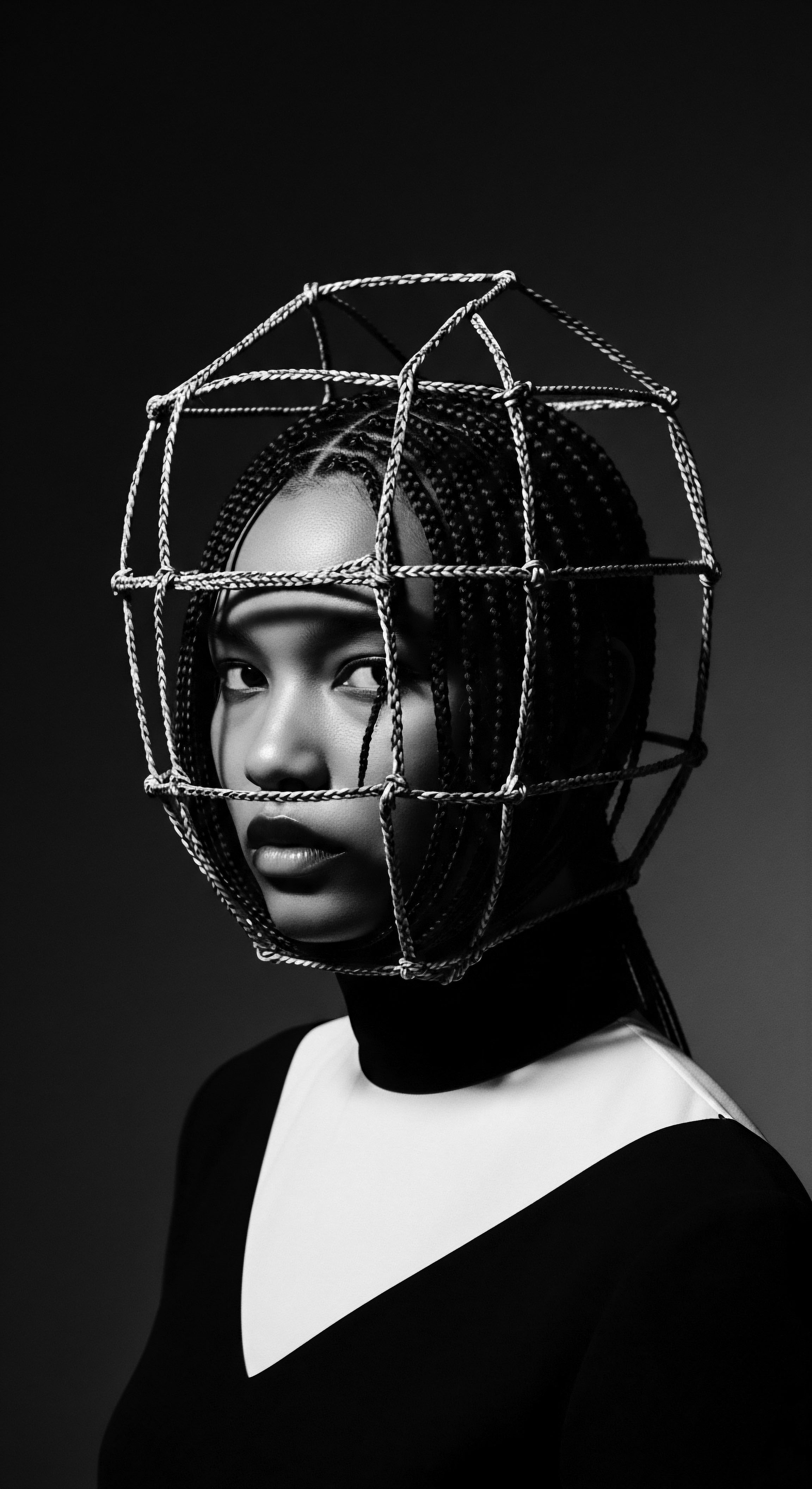
Oiling as a Styling Foundation
For millennia, oils served as the foundational element in preparing textured hair for styling. Their properties provided the necessary lubrication and pliability, allowing for intricate manipulations that would otherwise be challenging or damaging to the hair shaft. Oils eased the process of sectioning, detangling, and forming the basis for a myriad of styles.
They provided a “slip” that facilitated the movement of combs and fingers through dense, coily textures, minimizing breakage during the styling process. This application was often a precursor to creating the sculptural forms that characterize many traditional African and diasporic hairstyles.

Protective Styles and Oiling’s Symbiosis
The relationship between protective styles and hair oiling is deeply symbiotic, forming a central pillar of textured hair heritage. Styles like braids, twists, and locs, with origins tracing back thousands of years in Africa, were designed not only for aesthetic appeal but also to safeguard the hair from environmental damage and promote length retention. Oiling provided the essential moisture and protective barrier that allowed these styles to serve their purpose effectively.
Consider the cornrows, a style with a rich history dating back to 3000 B.C. in the Horn and West coasts of Africa. As hair was intricately braided close to the scalp, oils would have been applied to nourish the scalp directly and seal moisture into the braided sections, preventing the hair from drying out and breaking under tension. The practice was a blend of artistic expression and pragmatic care.
Oiling was an intimate engagement, often performed communally, solidifying its place within the heritage of textured hair care.
Traditional Styling Tools and Oiling’s Purpose
The tools used in ancestral hair styling were often simple, fashioned from natural materials, yet they were used with incredible skill in conjunction with oils. Wide-toothed combs, crafted from wood or bone, would have been used after an oil application to gently detangle hair, allowing the oils to distribute evenly. Fingers, too, were fundamental tools, becoming conduits for warmth and pressure during the oil massage, working the product from root to tip.
The application of oils softened the hair, making it more manageable for these traditional tools and techniques, thereby reducing friction and potential damage. This traditional interplay of hand, tool, and oil speaks to a holistic method where hair health and styling were inextricably linked.

The Hand’s Memory ❉ Traditional Application Methods
The application of oils was rarely a solitary, quick task. It was often a communal activity, a social rite where mothers, aunts, and sisters would gather to care for each other’s hair. This practice, especially in South Asian households where hair oiling is a generational tradition, often begins in childhood, with elders massaging oil into younger family members’ scalps (Cécred, 2025). This tender thread of human connection, the feeling of fingertips on the scalp, infused the oiling process with an emotional resonance far beyond its physical benefits.
The methods themselves were often deliberate:
- Warming ❉ Oils were sometimes gently warmed, either by hand or over a low flame, allowing for deeper penetration and a soothing sensation.
- Massaging ❉ The scalp massage was a core element, stimulating circulation, distributing oils, and promoting overall scalp health.
- Sectioning ❉ Hair was typically divided into small sections to ensure thorough application, a practical approach to managing dense, coily textures.
This methodical, often communal, application transformed a functional step into a cherished tradition, forging bonds and passing on knowledge from one hand to the next.
| Traditional Styling Need Pliability for braiding and twisting |
| Oiling's Historical Contribution Softened hair fibers, reduced friction, and allowed for intricate manipulation without breakage. |
| Traditional Styling Need Scalp health under protective styles |
| Oiling's Historical Contribution Nourished the scalp, prevented dryness, and alleviated itchiness when hair was braided or covered. |
| Traditional Styling Need Coil definition and frizz reduction |
| Oiling's Historical Contribution Helped individual coils clump together, creating definition and smoothing the hair's surface. |
| Traditional Styling Need Protection from environmental factors |
| Oiling's Historical Contribution Formed a barrier against sun, wind, and dust, preserving moisture and preventing damage. |
| Traditional Styling Need These historical uses highlight oiling's indispensable role in the art and longevity of traditional textured hair styling. |

Relay
The continuum of oiling within textured hair styling extends far beyond ancient ritual; it is a dynamic relay, transmitting ancestral wisdom across generations while adapting to new understandings and environments. This journey bridges elemental biology with modern science, demonstrating how enduring practices hold deep, verifiable truth. The wisdom of our forebears, preserved through deliberate care, offers a rich framework for addressing hair health today.

From Ancient Blends to Modern Formulations
The evolution of hair oiling reflects a thoughtful progression, moving from the direct use of raw botanical extracts to refined cosmetic blends. Ancient practices relied on readily available natural resources, such as shea butter, palm oil, and coconut oil, often processed through traditional methods within communities. These unrefined forms, rich in their natural compounds, provided robust nourishment. As societies changed and knowledge expanded, the understanding of these oils deepened.
Modern formulations may isolate specific beneficial components or combine oils with other conditioning agents to amplify their effects, yet the fundamental principle of lipid-based conditioning persists. This continuum underscores a foundational truth ❉ the earth provides what our hair needs.

The Science of Oil Absorption and Retention
Modern trichology has begun to validate what ancestral practitioners knew intuitively ❉ oils interact uniquely with hair, particularly textured hair. The molecular structure of various oils dictates their ability to penetrate the hair shaft or to sit on its surface as a sealant.
- Penetrating Oils ❉ Oils with smaller molecular weights and a high affinity for hair protein, such as Coconut Oil, can penetrate the hair shaft. Coconut oil, largely composed of lauric acid, can enter the hair cortex and bind to hair proteins, reducing protein loss, especially during washing (Hair by Clare, 2023; AfroHairCandy, 2023). This internal strengthening helps to mitigate “hygral fatigue,” the stress caused by hair swelling and contracting with water exposure.
- Sealing Oils ❉ Heavier oils or butters, such as Jojoba Oil, Castor Oil, or Shea Butter, tend to sit on the hair surface, forming a protective layer. This layer traps moisture within the hair shaft, preventing it from escaping, a crucial function for dry, textured hair (Livara Natural Organics, 2024). They also provide a physical barrier against environmental aggressors.
A study published in Cosmetics by Brazilian researchers, utilizing Matrix-Assisted Laser Desorption Ionization Time-of-Flight Mass Spectrometry (MALDI–TOF MS), revealed that popular oils like coconut, avocado, and argan do penetrate textured hair fibers. However, their effects on hair strength can vary, and their diffusion is less uniform in textured hair compared to straight hair due to the unique morphology of waves and twists (Cosmetics Design, 2025). This scientific inquiry offers a deeper understanding of the efficacy and application methods employed by generations past.
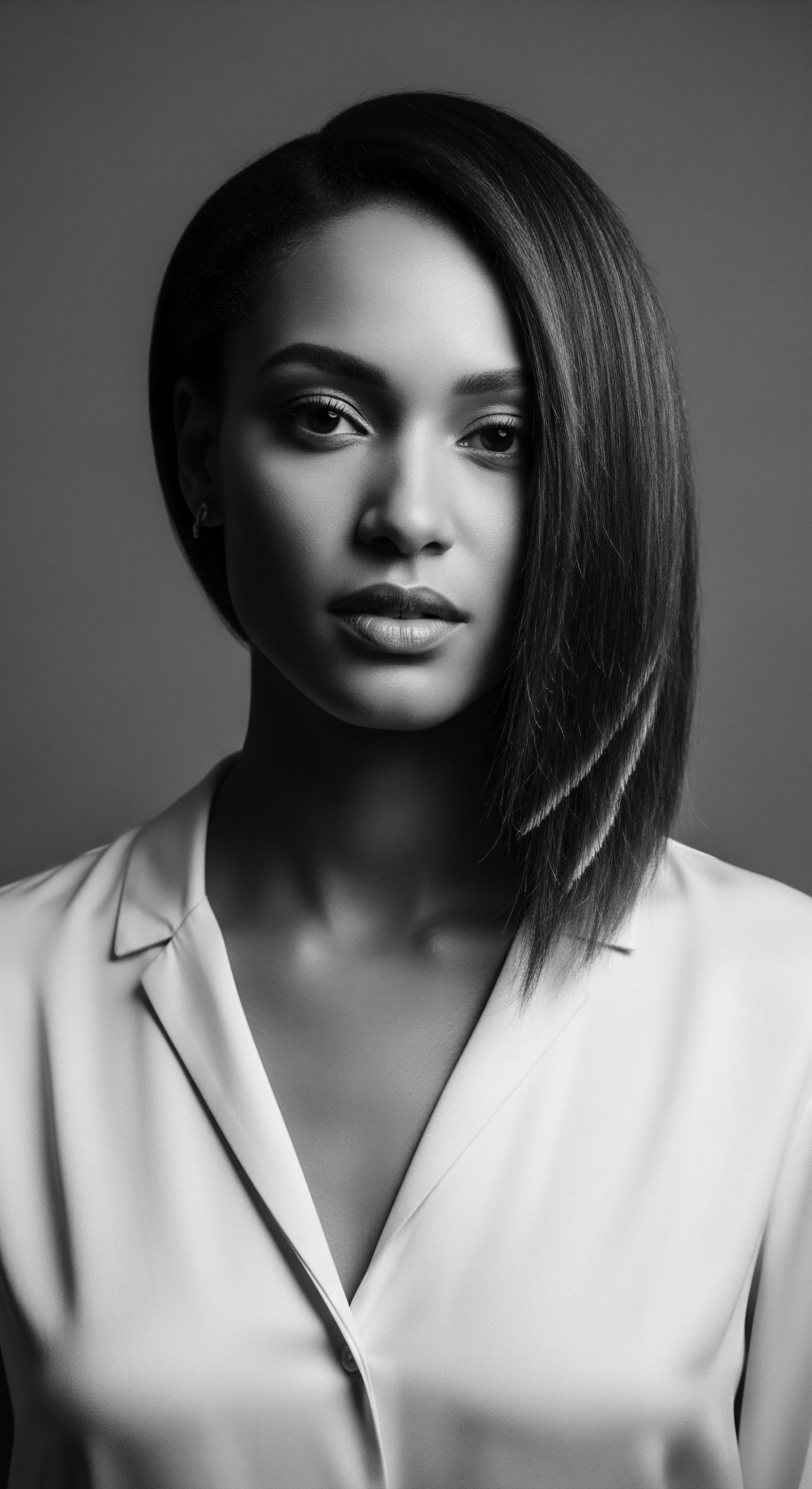
Holistic Well-Being and Hair Oiling
Beyond the tangible benefits to hair strands, oiling traditions often connect to a broader philosophy of holistic well-being. In many ancestral practices, care for the hair and scalp was an extension of self-care, a moment of stillness, and a connection to cultural roots. This perspective aligns with ancient systems like Ayurveda, where hair oiling, or “shiro abhyanga,” is revered for balancing body energies, relieving stress, and improving sleep (Etre Vous, 2023).
The very act of massage during oil application stimulates circulation to the scalp, which supports hair follicle health and can aid in growth (Etre Vous, 2023). This connection between physical touch, botanical ingredients, and mental serenity is a profound legacy that modern wellness practices are only now beginning to fully appreciate.
The enduring relay of oiling practices, from ancient methods to current science, underscores its inherent value in maintaining hair health and cultural connection.

Nighttime Routines and the Oiling Legacy
The quiet hours of night have historically been a sanctuary for hair care, particularly for textured hair, and oiling played a central role in these routines. Recognizing the vulnerability of hair during sleep, ancestral practices developed ways to preserve styles and maintain moisture. Applying oils before braiding, twisting, or wrapping hair at night created a protective environment, reducing friction against sleeping surfaces and locking in the day’s moisture.
This practice helped prolong the life of hairstyles, making daily manipulation less necessary, and significantly contributed to length retention by preventing breakage. The wisdom of preserving hair overnight, often with the aid of a light application of oil, is a tradition deeply embedded in Black hair care, anticipating the protective function of modern bonnets and silk scarves.
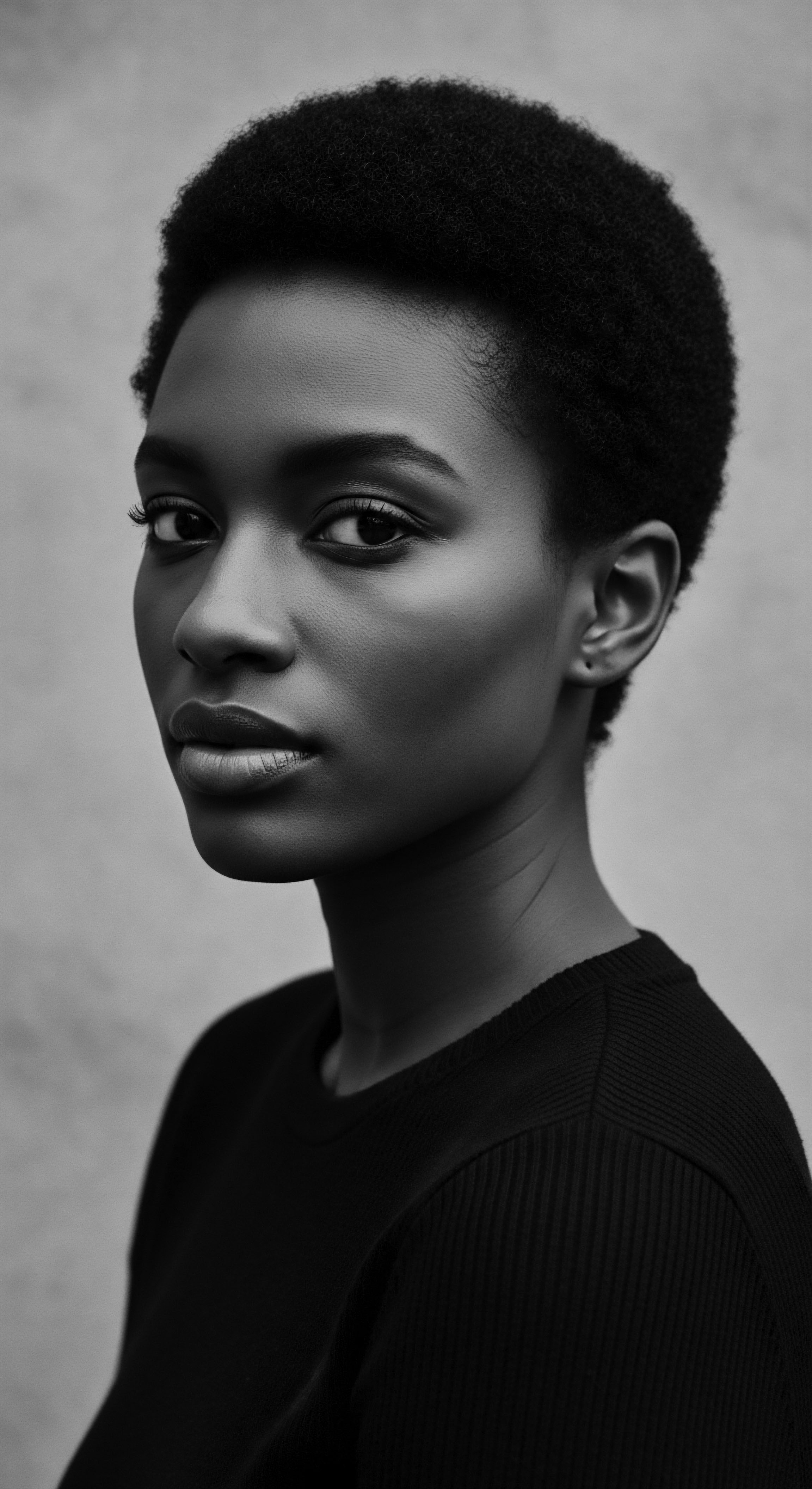
Oils as Problem Solvers
For generations, oils have served as primary solutions for common textured hair concerns.
- Dryness ❉ The most persistent challenge for textured hair, dryness, was directly addressed by the emollient properties of oils and butters, which provided deep hydration and sealed moisture.
- Breakage ❉ By improving elasticity, reducing friction during styling, and fortifying the hair shaft, oils historically minimized breakage, allowing for greater length retention.
- Scalp Health ❉ Oiling practices, often accompanied by massage, helped address issues such as itchiness, flakiness, and dandruff by nourishing the scalp and supporting a healthy environment for hair growth. Certain oils possess antimicrobial and anti-inflammatory properties, further aiding scalp wellness.
A powerful example of oiling’s historical role as a problem solver comes from the Basara Tribe of Chad. They are renowned for their practice of weekly application of an herb-infused raw oil or animal fat mixture, known as Chebe. This ancestral method, often braided into the hair, is specifically used for extreme length retention, powerfully illustrating oiling’s practical function in mitigating breakage and preserving hair over time (Reddit, 2021). This specific historical example underscores how oiling was not merely a cosmetic step but a strategic intervention for hair health and longevity within textured hair heritage.

Reflection
To consider the historical role of oiling in textured hair styling is to embark on a journey through a living archive, where each strand holds the echoes of ancestral wisdom. This practice, woven into the very fabric of Black and mixed-race communities, stands as a testament to ingenuity, resilience, and a profound reverence for one’s inherent beauty. The application of oils was never a fleeting trend; it emerged from deep observational knowledge of hair’s unique needs, shaped by environmental realities, and elevated by communal ritual.
From the meticulous preparation of hair for protective styles in ancient Africa to the therapeutic scalp massages that soothe both hair and spirit, oils have been steadfast companions in the textured hair experience. They have served as moisturizers, sealants, protectors, and healers, bridging the gap between raw botanical properties and the hair’s intricate biology. The science of today merely offers a lexicon to describe what generations knew by touch and tradition.
The heritage of oiling reminds us that hair care is more than surface-level aesthetics; it is an act of self-love, a connection to lineage, and a continuation of practices that have sustained and celebrated textured hair through countless seasons of challenge and triumph. It is a quiet declaration that the soul of a strand carries within it the stories of those who came before, a luminous legacy passed down, one tender, oiled touch at a time.

References
- Cécred. (2025, April 15). Understanding Hair Oiling ❉ History, Benefits & More.
- Livara Natural Organics. (2024, August 1). Which Oils Are The Best For Afro-Textured Hair?
- Ciafe. (2023, January 31). Discovering the Origins of Shea Butter – A Journey to the Heart of Africa.
- Cosmetics Design. (2025, January 8). Study Reveals Differences in Vegetable Oil Penetration Between Textured and Straight Hair Types.
- Etre Vous. (2023, August 24). Here’s why hair oiling is the ancient ritual worth adopting.
- Hair by Clare. (2023, November 8). Hair Science ❉ The Chemistry of Natural Hair Oils and Their Nutrients.
- Reddit. (2021, August 26). No raw oils and butters vs. Traditional African hair care?.
- My Sasun. (2023, May 19). Exploring the Rich World of Nigerian Hair and Beauty Products.
- IJCRT.org. Exploring Coconut As A Beauty Ingredient From Tree To Skin.
- Ligne St Barth. Coconut Oil Body & Hair Care.
- GirlrillaVintage the Blog. (2017, September 8). Scalp-Greasing ❉ A Black Hair Ritual.
- Obscure Histories. (2024, May 8). The Globalization of Shea Butter.
- Africa Imports. Traditional African Secrets For Long And Healthy Hair.
- Prose. (2021, August 23). A Complete Guide to Protective Styles.
- Wikipedia. Protective hairstyle.
- Katherine Haircare. (2023, February 17). Protective Styles for Long Hair Growth.
- PubMed. (2022, May-Jun). Hair Oils ❉ Indigenous Knowledge Revisited. Int J Trichology.
- OilCocos. (2024, September 16). The Use of Coconut Oil in Traditional Healing Practices.
- Joico. Roots, Rise & Influence ❉ A Retrospective of Textured Hair.
- Fabulive. Rediscovering Historical Hair Care Practices.
- Newsweek. (2022, August 24). Everything You Need To Know About The Ancient Art Of Hair Oiling.
- Chatelaine. (2023, May 8). Hair Oiling Is More Than A Trend—It Connects Me To My South Asian Roots.
- Stabroek News. (2023, November 26). The west has ‘discovered’ hair oiling.
- An Exploration of The Cultural Symbolism of Some Indigenous Cosmetic Hair Variants in The Dormaa Traditional Area, Ghana. African Journal of Applied Research. (2024, December 27).
- African Beauty and Skincare ❉ A Deep Dive into History, Traditions, and Natural Ingredients. (2025, January 16).
- The Twisted Strands of Textured Hair History ❉ From Ancient Remedies to Modern Magic. (2024, April 7).
- BeautyMatter. (2025, February 4). The Untold Story of Jojoba Oil in Black Beauty.
- Hair Care Practices from the Diaspora ❉ A Look at Africa, America, and Europe. (2025, January 23).
- Ananta Ripa Ajmera. (2022). The Way of the Goddess ❉ Daily Rituals to Awaken Your Inner Warrior and Discover Your True Self.
